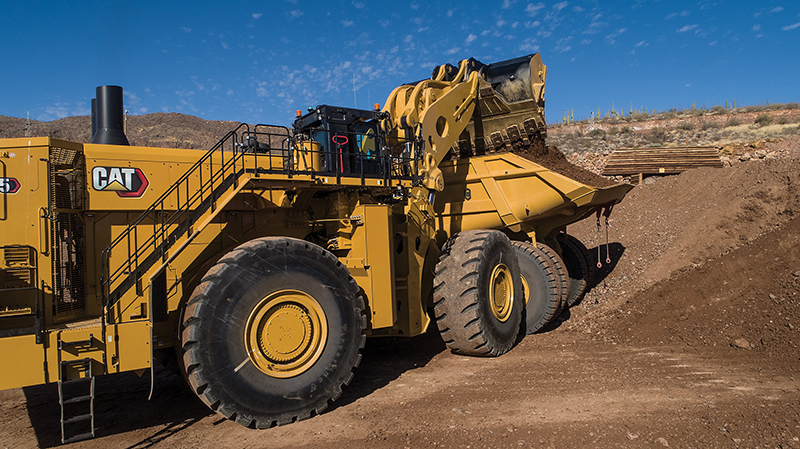CATERPILLAR has announced the launch of the new Cat 995 wheel loader.
The machine builds on the success of the 994K and is said to feature up to 19% increased productivity than the previous model with its higher rated payload and 6% increase in hydraulic force with equal hydraulic cycle time.
Cat added that the loader also delivers up to 13% lower hourly fuel consumption and offers up to an additional 8% efficiency gain when operating in Enhanced Eco Mode compared to throttle lock mode.
Enhancements to the front linkage include an ‘improved’ casting design, increased weld size, larger bearings and pins, and profile changes. New, larger capacity buckets available for the 995 incorporate an extended floor for fast loading, high fill factors reaching 115%, and ‘excellent’ material retention. Buckets are interchangeable between the 995 and 994K.
Built to the same size as the 994K but offering a higher rated payload, Cat revealed the 995 enables a one-pass reduction when loading Cat 785, 789 and 793 mining trucks. This equates to up to a 33% increase in production and efficiency when loading the 785, up to a 25% increase with the 789, and up to a 20% increase with the 793.
The 995 is powered by a Cat 3516E engine meeting EU Stage V standards.
The redesigned operator environment has 50% more legroom, while the pressurised cab reduces vibration feedback, lowers sound levels and includes automatic temperature control. Electro-hydraulic speed-sensing steering with force feedback automatically stiffens when traveling at higher speeds and softens as speed decreases.
A taller windshield provides a 25% increase in glass surface area and a 64% increase in wiper sweep area. Two 10-inch colour LED monitors display machine control, operating functions and the electronic operator’s manual. A third 8-inch screen offers a view of the standard rear view camera and is upgradable to a multi-view camera system that offers 270-degree vision with rear object detection.
Standard tip up prevention technology is designed to avoid unnecessary stress on the drivetrain and structural components by delivering full breakout forces while preventing the back tires from ‘significantly’ lifting off the ground.
The wheel loaders offers a 500-hour engine oil change interval. The number of steering hoses has been reduced from 15 to 10 and tubes cut from 11 to one to improve steering system reliability.









